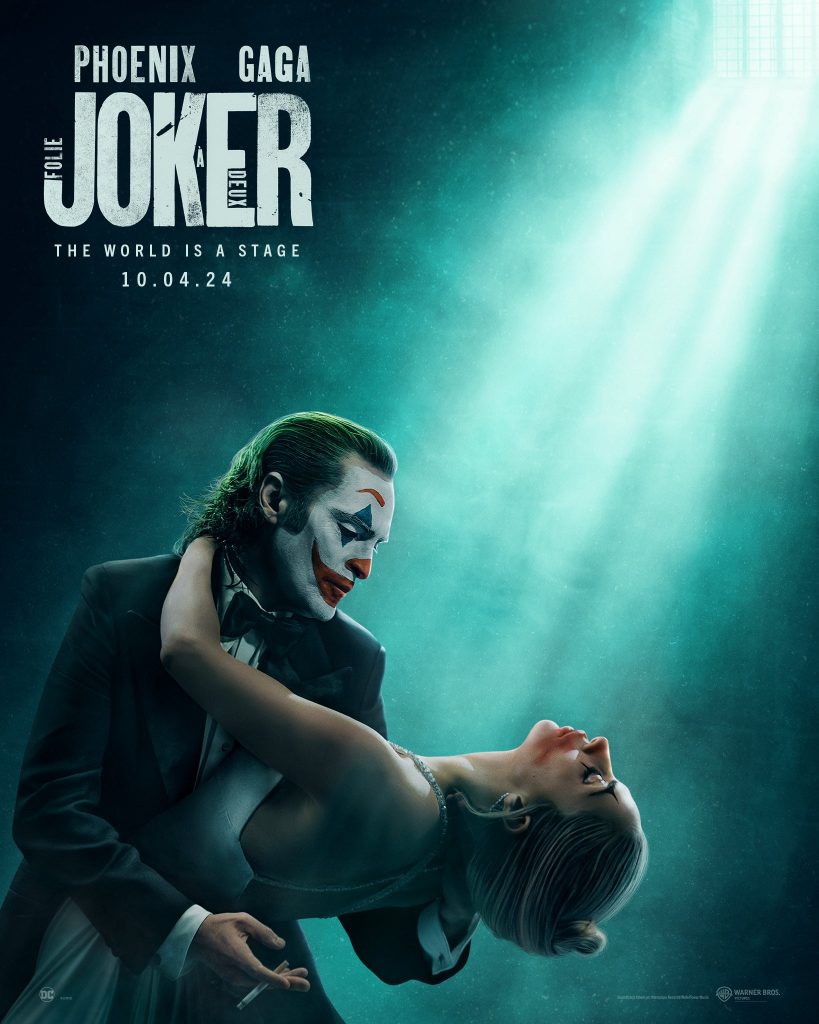The long-awaited sequel to Todd Phillips’ “Joker,” “Joker: Folie à Deux” was released in theaters this Friday. Following its release, the film has been the object of ridicule for its bizarre plotline.
Surprisingly, the opening scene is not live-action but animated, featuring a mock Looney Tunes cartoon, in which Joker is haunted by his own evil shadow on a talk show. The sequence seems to imply that the Joker persona is not really Arthur Fleck’s personality, but a persona or split-personality that takes over him. The talk show setting mirrors the scene in the first film where Fleck kills the host, Murray.
The film stars the split personality of Fleck and Joker (Joaquin Phoenix) and begins with Fleck under state custody in a mental institution, awaiting trial. While he is there, he is entered into a music class and meets Harleen “Lee” Quinzel (Lady Gaga) a Harley Quinn-based woman who claims to be a fan and with whom he falls deeply in love. Following their romantic tryst, Fleck is to finally stand trial for the five murders he committed in the original film as Joker.
The movie is shot in a beautiful cinematic style mimicking the noir style of the 1940s and 50s. The scenes alternate between what is happening in real-time and song-led Joker fantasies occurring in Fleck’s imagination. These scenes are shot with great production value, though many of the songs featuring Quinzel do not make enough use of Gaga’s powerful voice, opting to give her lighter, falsetto tones. Though the songs are well-produced, they often feel out of place with the somber, serious tone of the movie.
Though the first film is incredibly difficult to replace, “Joker: Folie à Deux” does a great job of further developing the psychological profile of Joker. The plot delves further into how the persona developed within Fleck and brings life to both distinctive aspects of the persona, creating a Jekyll and Hyde-esque tragedy.
The introduction of Quinzel adds a new, romantic aspect to the storyline and offers a new portrayal of the iconic Quinn, one where she is not a psychologist turned evil by love but an already dark mental patient.
In addition, the first film ended with the Joker at large, with a band of followers and seen by the public in a positive, grandiose light. The sequel does a great job of critiquing the social service programs and general attitude toward those with mental health issues in the United States, while at the same time, condemning acts of violence.
The ending, the subject of much controversy, dismantles the harmful idea perpetuated in the first movie of the tragic, down-on-his-luck male character scaring the women around him and going on a revenge-killing spree to advance from loser to hero. It instead focuses on the devastating consequences of such actions.
Phoenix and Gaga do a phenomenal job acting their parts and ultimately save the movie. Phoenix’s iconic laugh, gut-wrenching monologues and manic outbursts are impossible to look away from, while Gaga’s soft yet demanding presence commands attention.
Ultimately, while the film doesn’t quite reach the iconic level of the original, it does a respectable job of following up the story and creates a deeper profile for the Fleck character and the franchise.
Rating: 3.5/5



